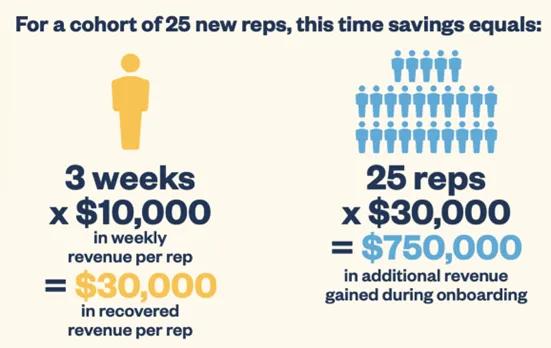ATD Blog
Why Role Play Delivers 75% Retention (Vs. 5% From Lectures)
Wed Jun 18 2025

Modern sales training has a gap. Not a knowledge gap, but a performance one.
Salespeople today aren’t just pitching products. They’re navigating complex conversations, adapting in real time, and building trust with increasingly discerning buyers. And while most training programs focus on delivering information, knowing what to say isn’t the same as knowing how to say it—or when, or why.
That kind of readiness only comes from active practice. That’s where role play comes in.
Research Shows Role Play Is Effective
Role play is one of the most effective ways to prepare reps for high-stakes conversations. It gives them space to try, miss, adjust, and improve, but without risking deals. Reps can test out messaging, practice objection handling, and sharpen their instincts in a low-pressure environment.
The data backs it up. Retention from active practice like role play averages around 75 percent, compared to just 5 percent for lecture-style learning. Sellers who regularly role play have been shown to close more deals—research shows by as much as 20 to 45 percent.
The impact is quantifiable. Organizations implementing structured role play programs report ramp time reductions of two to four weeks. For a team of 25 new reps, each generating $40,000 monthly when fully productive, accelerating readiness by just three weeks translates to $750,000 in additional revenue—before accounting for improved win rates and retention.

Despite all this clear data, many sales enablement programs treat it as an optional add-on. Why?
The Challenge in Scaling Role Play
Scaling role play isn’t easy. Coordinating live sessions across time zones takes time. Informal practice often lacks structure or useful feedback. Plus, many frontline managers aren’t trained as effective coaches. Without a way to track participation or outcomes, it’s hard to prove impact—or even know what’s working.
So, despite being one of the most effective training strategies, role play often goes underused, replaced by easier but less effective alternatives.
How to Incorporate Role Play Into Your Sales Enablement Training
The teams getting the most from role play are building it into their overall training flow. Some are using simulations for solo practice. Others are embedding structured peer exercises into onboarding and coaching. The common thread is consistency—making role play part of the culture, not just a one-off activity.
This approach doesn’t just improve rep performance—it also gives managers and enablement leaders better insight into skills, progress, and where to focus coaching efforts.
Interested in building your overall training and facilitation skills? ATD’s Training & Facilitation Certificate covers all aspects of the training cycle.
Tips for Getting Started
If you’re looking to implement or improve role play, start simple. Here are a few tips to keep it effective and repeatable:
Make it specific. Each role play should have a defined scenario, goal, and skill focus, like objection handling or pricing conversations.
Keep it short. A 5- to 10-minute exchange is often enough to surface skill gaps and generate useful feedback.
Pair strategically. Match newer reps with more experienced ones to build confidence and enable peer coaching.
Provide a feedback framework. Teach reps how to give constructive, focused feedback to their peers. Use prompts like: What worked well? Where did they lose momentum? What would you try instead?
Debrief as a group. Encourage reps to share what they learned to the wider group after the session. This helps reinforce takeaways and normalize growth through practice.
Use AI tools to extend learning. Let reps practice with AI-powered simulations before and after live role play. It helps them warm up, get unstuck on common challenges, and reinforce learning through repetition.
Track outcomes. Build in ways to measure participation, improvement, and skill adoption over time. This helps refine training and connects the dots between practice and pipeline impact.
Involve managers early. Equip frontline managers with role play guides or rubrics so they can reinforce the same standards in coaching conversations. Their participation sends a clear message: this isn’t extra work—it’s core to performance.
Build it into the rhythm. Tie role play to weekly team meetings or coaching sessions. When it becomes a habit—not an event—reps show up better prepared and more willing to improve.
The more consistent the effort, the more measurable the return. Reps don’t need dozens of sessions they need regular opportunities to apply what they’re learning and reflect on what’s working.
For more strategies about implementing role play that drives real outcomes, download the full guide here.

